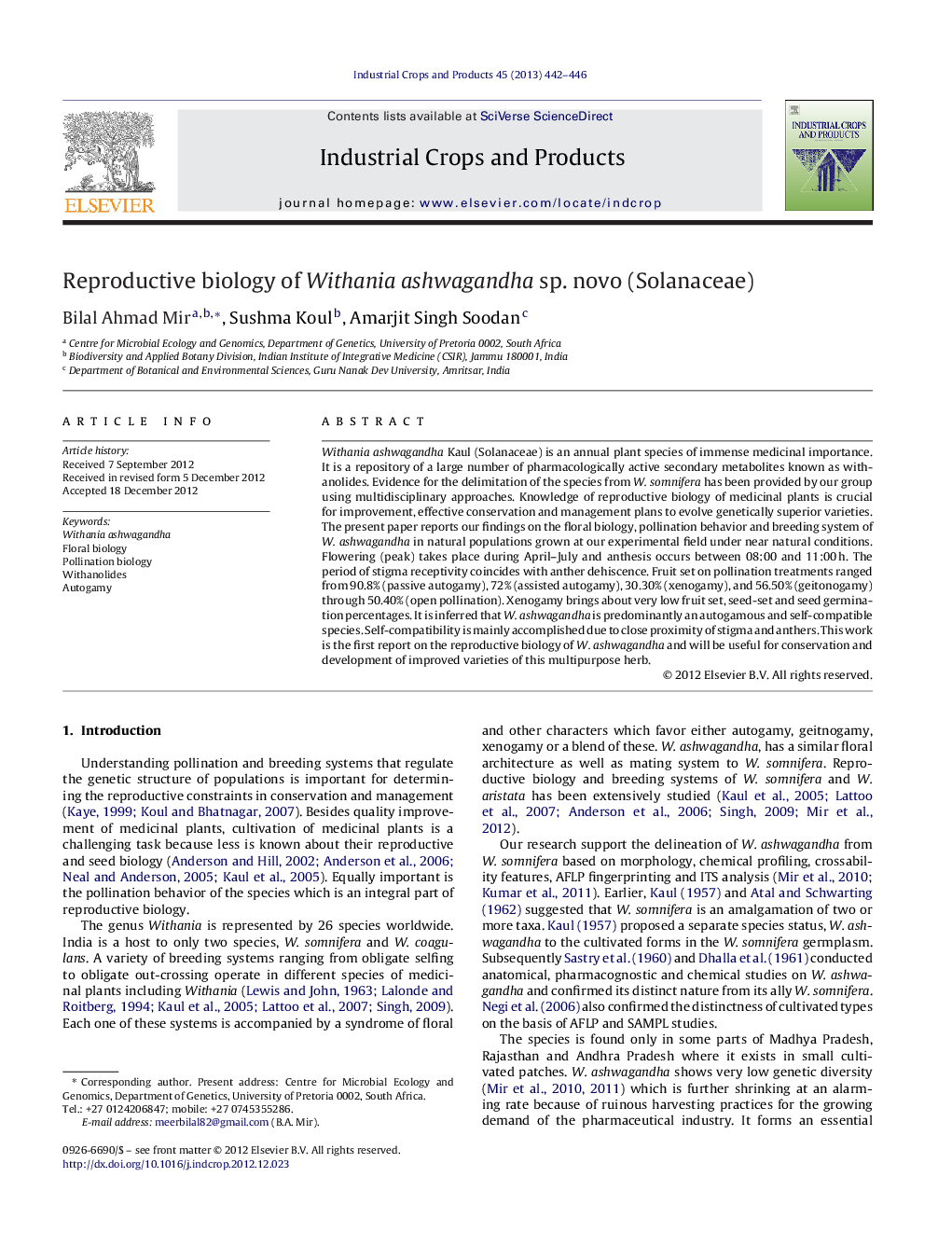| Article ID | Journal | Published Year | Pages | File Type |
|---|---|---|---|---|
| 4514072 | Industrial Crops and Products | 2013 | 5 Pages |
Withania ashwagandha Kaul (Solanaceae) is an annual plant species of immense medicinal importance. It is a repository of a large number of pharmacologically active secondary metabolites known as withanolides. Evidence for the delimitation of the species from W. somnifera has been provided by our group using multidisciplinary approaches. Knowledge of reproductive biology of medicinal plants is crucial for improvement, effective conservation and management plans to evolve genetically superior varieties. The present paper reports our findings on the floral biology, pollination behavior and breeding system of W. ashwagandha in natural populations grown at our experimental field under near natural conditions. Flowering (peak) takes place during April–July and anthesis occurs between 08:00 and 11:00 h. The period of stigma receptivity coincides with anther dehiscence. Fruit set on pollination treatments ranged from 90.8% (passive autogamy), 72% (assisted autogamy), 30.30% (xenogamy), and 56.50% (geitonogamy) through 50.40% (open pollination). Xenogamy brings about very low fruit set, seed-set and seed germination percentages. It is inferred that W. ashwagandha is predominantly an autogamous and self-compatible species. Self-compatibility is mainly accomplished due to close proximity of stigma and anthers. This work is the first report on the reproductive biology of W. ashwagandha and will be useful for conservation and development of improved varieties of this multipurpose herb.
► Reproductive biology of W. ashwagandha Kaul was reported first time. ► We report the species to be highly self compatible due to close proximity of stigma and anthers. ► The period of stigma receptivity coincides with anther dehiscence. ► Fruit set on pollination treatments ranged between 90.8% (passive autogamy) and 30.30% (xenogamy). ► Xenogamy brings about very low fruit set, seed-set and seed germination percentages.
